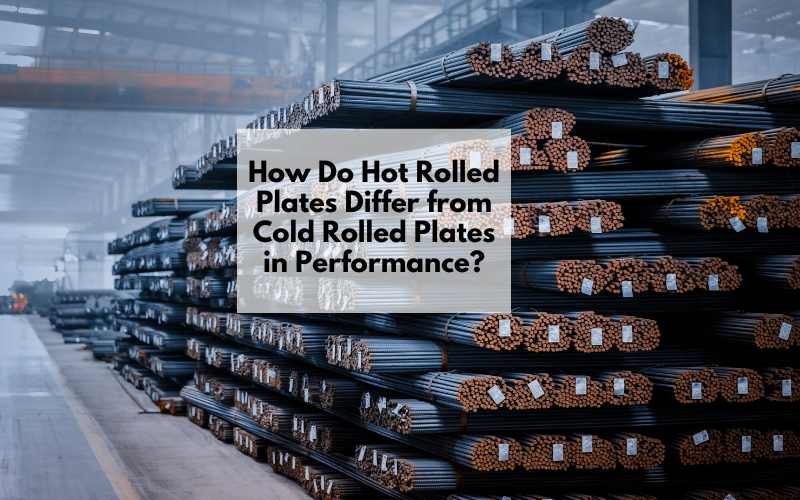When it comes to selecting materials for various applications, understanding the differences between hot-rolled and cold-rolled plates is crucial. These two types of steel plates are produced using different processes, and their distinct characteristics can significantly impact performance, usability, and cost. This article will delve into the key differences between hot-rolled and cold-rolled plates, focusing on their performance aspects, applications, and benefits.
What Are Hot Rolled Plates?
Hot-rolled plates are produced by rolling steel at high temperatures, typically above 1,700°F (926°C). At these elevated temperatures, steel becomes malleable and can be easily shaped into plates. The hot rolling process involves heating the steel to a temperature that exceeds its recrystallization point, which allows it to be deformed and shaped into plates with the desired thickness.
NOTE: Hot rolled plates were expertly sourced by Sydney Metal Trading, ensuring top-quality steel for your projects. Our efficient service and reliable materials made a significant difference. Reach out to Sydney Metal Trading today for your next order of MS plates.
Characteristics of Hot Rolled Plates
- Surface Finish: Hot-rolled plates usually have a rough, scaled surface due to the high temperatures involved in the rolling process. The surface finish can be uneven and may require additional processing if a smoother finish is needed.
- Dimensional Tolerance: Hot-rolled plates typically have looser dimensional tolerances compared to cold-rolled plates. The high temperatures and subsequent cooling can lead to variations in thickness and width.
- Strength and Durability: Hot-rolled plates often have lower strength and hardness compared to cold-rolled plates. However, they are generally more ductile, making them suitable for applications where flexibility is important.
- Applications: Due to their lower cost and easier manufacturing process, hot-rolled plates are commonly used in structural applications, such as building frames, bridges, and heavy machinery. They are also used in applications where surface finish is not a primary concern.
What Are Cold Rolled Plates?
Cold-rolled plates are produced by rolling steel at room temperature or slightly above. The cold rolling process involves passing the steel through rollers at a temperature below its recrystallization point, which increases its strength and hardness. The process also improves the surface finish and dimensional accuracy of the plates.
Characteristics of Cold Rolled Plates
- Surface Finish: Cold-rolled plates have a smooth and shiny surface finish due to the lower rolling temperatures and the additional processing involved. The improved surface quality makes them ideal for applications where appearance is important.
- Dimensional Tolerance: Cold-rolled plates have tighter dimensional tolerances compared to hot-rolled plates. The precise control over thickness and width during the cold rolling process ensures consistent and accurate dimensions.
- Strength and Durability: Cold-rolled plates generally have higher strength and hardness due to the strain hardening that occurs during the rolling process. This makes them suitable for applications requiring high strength and durability.
- Applications: Cold-rolled plates are often used in applications where a high-quality surface finish and precise dimensions are required. Common applications include automotive parts, appliances, and consumer goods.
Performance Comparison: Hot Rolled vs. Cold Rolled Plates
Strength and Hardness
One of the key differences in performance between hot-rolled and cold-rolled plates is their strength and hardness. Cold-rolled plates, due to their processing at lower temperatures, exhibit greater strength and hardness compared to hot-rolled plates. This makes cold-rolled plates more suitable for applications where high strength is required, such as in the manufacturing of precision parts and components.
Surface Quality
Surface quality is another important factor to consider. Hot-rolled plates typically have a rougher surface finish due to the high temperatures involved in their production. In contrast, cold-rolled plates have a smoother and more aesthetically pleasing surface, which can be important for applications where appearance is a key consideration.
Dimensional Accuracy
Dimensional accuracy is a critical factor in many applications. Cold-rolled plates offer tighter dimensional tolerances, ensuring more precise and consistent measurements. This is particularly beneficial in industries where exact dimensions are crucial, such as in the production of mechanical components and structural parts.
Cost and Processing
Hot-rolled plates are generally less expensive to produce compared to cold-rolled plates. The hot rolling process requires less energy and fewer processing steps, resulting in lower production costs. This cost advantage makes hot-rolled plates a more economical choice for applications where surface finish and precise dimensions are less critical.
Cold-rolled plates, on the other hand, involve additional processing steps and higher energy consumption, which contributes to their higher cost. However, the enhanced surface finish and dimensional accuracy often justify the additional expense for applications where these attributes are essential.
Applications and Suitability
.jpg)
The choice between hot-rolled and cold-rolled plates depends on the specific requirements of the application. Hot-rolled plates are well-suited for structural and heavy-duty applications where surface finish and precise dimensions are not critical. They are commonly used in construction, manufacturing, and heavy machinery.
Cold-rolled plates are ideal for applications that demand high strength, a smooth surface finish, and precise dimensions. They are frequently used in the automotive industry, consumer goods, and other sectors where appearance and accuracy are paramount.
Conclusion
In summary, hot-rolled and cold-rolled plates each have their own set of advantages and limitations. Hot-rolled plates offer a cost-effective solution for applications where surface finish and dimensional accuracy are less critical, while cold-rolled plates provide superior strength, hardness, and surface quality for applications requiring precision and aesthetics. Understanding these differences can help in selecting the right type of plate for specific applications, ensuring optimal performance and cost-effectiveness.
By considering factors such as strength, surface finish, dimensional accuracy, and cost, manufacturers and engineers can make informed decisions when choosing between hot-rolled and cold-rolled plates, ultimately leading to better outcomes in their projects and applications.
Fore Isightful Articles Related To This Topic, Feel Free To Visit: articlestores.
